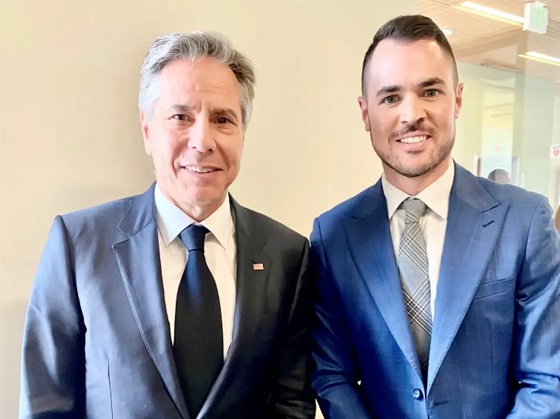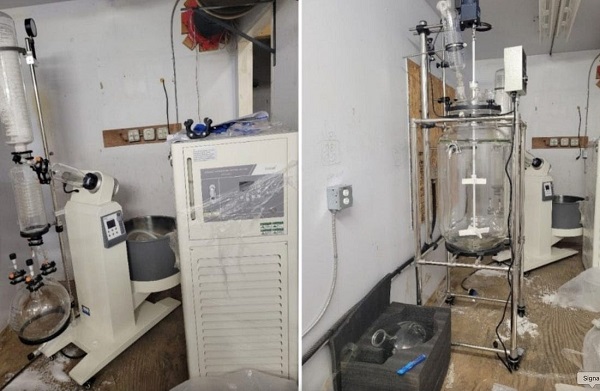Alberta
Protecting Alberta’s economic future from Ottawa
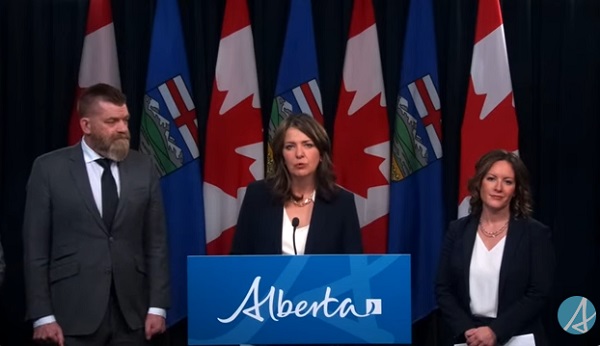
Alberta’s government will introduce an Alberta Sovereignty Within a United Canada Act motion to fight back against the unconstitutional, job-killing federal emissions cap.
The proposed oil and gas emissions cap is in reality a federal government-imposed cap on oil and gas production and, if implemented, will result in a production cut of at least one million barrels a day of oil and gas in Alberta, while effectively prohibiting any production growth.
The Canadian constitution clearly gives provinces exclusive jurisdiction over non-renewable natural resource development. Multiple reports have shown an emissions cap will kill 150,000 jobs, devastate Alberta’s economy, cut production, and hurt Albertans.
Yet, on Nov. 4, the federal government introduced draft regulations for an oil and gas emissions cap, ignoring concerns from many provinces, industry, businesses and Albertans.
In response, Alberta’s government will introduce an Alberta Sovereignty Within a United Canada Act motion to stop a federal cap from infringing on the province’s distinct jurisdiction and killing good-paying jobs. The resolution asks the legislative assembly for approval to take a series of swift, effective actions designed to protect Alberta if the production cap ever becomes law.
“We will continue to defend our province from Ottawa’s senseless and direct attack. Our motion protects Albertans’ jobs and livelihoods, puts Ottawa back in their place, and ensures we can continue to support global energy security with Alberta oil and gas for decades to come.”
Independent analysis by the Conference Board of Canada, Deloitte and S&P Global all show the devastating impact of the federal government’s proposed oil and gas emissions cap. This includes cutting production by one million barrels a day by 2030 and draining billions from Canada’s economy. In addition, the Conference Board of Canada estimates that up to 150,000 Canadian jobs could be lost as a result of the cap. As a result of these – and other – impacts, the average Canadian family would have up to $419 less for groceries, mortgage payments and utilities every month.
“This cap is not actually about emissions. This is about the federal government wanting to cut oil and gas production and control our energy sector, even if it costs thousands of jobs and hurts Canadians from coast to coast. We are standing up for our province and protecting Albertans from this extreme federal overreach.”
If passed, the actions proposed in the Alberta Sovereignty Within a United Canada Act motion will help protect Alberta’s economy while the province continues producing responsible energy to meet the world’s growing demands.
The motion proposes that the government launch an immediate constitutional challenge when, or if, the federal production cap becomes law. It also instructs the government to consider passing legislation, amending provincial regulations or taking whatever other steps are needed to:
- Ensure that no provincial entity participates in the enforcement or implementation of the federal cap.
- Ensure that all interest holder oil and gas production facilities and related infrastructure in Alberta (Interest Holder Facilities) are ‘essential infrastructure’ subject to the protections granted under Alberta’s Critical Infrastructure Defence Act.
- Prohibit entry by any individual, including any federal official or contractor, onto any Interest Holder Facilities, excepting any interest holders, employees and contractors, and those specifically licensed to enter by the Government of Alberta.
- Declare all information that is directly or indirectly related to greenhouse gas, collected at Interest Holder Facilities, as proprietary information exclusively owned by the Government of Alberta, and mandate that all emissions data be reported and disclosed at the province’s discretion.
- Effectively sell conventional oil through the Conventional Oil Royalty-in-Kind program, and work collaboratively with industry to implement a Bitumen Royalty-in-Kind program for bitumen, and develop a similar program for natural gas, if necessary.
- Work collaboratively and proactively with other provinces and territories, the United States and First Nations to double oil and gas pipeline capacity to tidewater and the United States of America.
If the motion is passed, Alberta’s government will immediately begin taking steps to be ready to protect the province if the federal regulations become law.
Quick facts:
- Alberta has repeatedly expressed that the federal cap is unconstitutional and impermissibly intrudes into an area of exclusive provincial jurisdiction as set out in section 92A of the Constitution Act, 1867.
- The Conference Board of Canada forecasts that royalties in Alberta will drop by $2-4 billion in 2030-31 under the emissions cap.
- Deloitte forecasts a $26 billion cut to Canada’s overall GDP in 2035, including a $16 billion decline in the GDP produced by oil and gas. It forecasts a five per cent decline in revenue for Alberta by 2035.
- Via the ScraptheCap.ca, over 4,000 people have sent letters to their Members of Parliament and federal ministers, and there have been over 12 million views of the current video online.
- Albertans and Canadians can continue to use the website to send letters.
Related information
Alberta
Nuclear in the mix for Alberta’s energy future

Alberta’s government is inviting Albertans, Indigenous communities and industry to join the conversation on nuclear energy in the province.
Alberta is launching a public engagement to explore nuclear energy’s potential to meet the future needs of families, businesses and communities. As part of the first phase, Alberta’s government is appointing an expert panel to engage with people across the province, as well as launching a public survey to help inform a nuclear energy roadmap for Alberta.
With increasing demand for electricity, fuelled by population growth, many jurisdictions in Canada and around the world are advancing nuclear energy development. As a source of safe, reliable, emissions-free energy, nuclear power has emerged as a viable option for growing energy needs while supporting responsible decarbonization goals. It also has the potential to enhance grid reliability and affordability, create jobs and help power new, energy-intensive industries and technologies.
“Alberta is at the centre of Canada’s growth, and with that growth comes the responsibility to secure the next generation of energy. Nuclear power has the potential to expand our grid, support new industries and keep pace with rising demand. This engagement gives Albertans a real voice in shaping our future, while positioning our province to lead the way in innovative, responsible energy development.”
Danielle Smith, Premier
“As demand for electricity grows, affordability and reliability must remain at the heart of our system. Exploring nuclear energy is about ensuring Albertans have access to dependable, emissions-free power that can support families, businesses and communities for generations.”
Nathan Neudorf, Minister of Affordability and Utilities
The Nuclear Energy Engagement and Advisory Panel will lead a range of engagement activities, gather input and deliver a report with recommendations on how Alberta could enable a nuclear energy industry. The panel will be chaired by Affordability and Utilities Parliamentary Secretary Chantelle de Jonge and includes five additional members with diverse experience and leadership in industry, academia and Indigenous government:
Deron Bilous, senior vice-president of Western Canada, Counsel Public Affairs
Tim Boston, principal, Boston Edge Strategies Inc.
Stephen Buffalo, president and CEO, Indian Resource Council of Canada
Rudiger Tscherning, fellow on Nuclear Law and Policy, University of Calgary
Harrie Vredenburg, professor of Strategy and Global Management, University of Calgary
“Nuclear power has the potential to play an important part in meeting Alberta’s future energy needs. I’m proud to lead a panel that will provide people in Alberta with the opportunity to have their say and shape the future of energy in our province.”
Chantelle de Jonge, parliamentary secretary, Affordability and Utilities
The Nuclear Energy Development survey is available online and will be open until Sept. 25. Feedback will inform future engagement activities. Alberta’s government has also proactively reached out to Indigenous communities across the province to help determine the best approach for meaningful engagement and to foster early relationship building. Industry, municipalities, Indigenous communities and others are also invited to share their input through an online request for information which will be open until Oct. 25.
“Nuclear energy is ready to meet Alberta’s growing needs. We applaud the province’s forward-thinking leadership in exploring nuclear’s ability to provide a secure and prosperous energy future.”
George Christidis, president and CEO, Canadian Nuclear Association
The next phase of engagement will feature in-person meetings and engagement sessions with Indigenous communities, municipalities and industry and begin later this year. Engagement activities will continue into 2026.
Alberta
New Calgary plant to produce luxury vinyl flooring with Alberta oil and gas

Carlos Soares, president of Divine Flooring, inside the company’s 100,000-square-foot warehouse just outside Calgary. Photo for the Canadian Energy Centre
From the Canadian Energy Centre
By Will Gibson
Heartland Polymers to supply recyclable, low emissions polypropylene plastic
Carlos Soares has sold enough flooring to furnish all the residences, businesses and public facilities in a medium-sized city since starting Divine Flooring in 1999.
But now the Calgary entrepreneur will expand into manufacturing luxury flooring using a key Alberta hydrocarbon that will create a more sustainable product and reduce reliance on imports.
“People walk on luxury vinyl floors every day in their homes, malls, stores, hotels— it is the fastest growing category in our industry over the past decade,” says Soares, whose business employs 165 people and 250 contractors in Calgary, Edmonton, Vancouver and Chicago.
“Billions of square feet of new floor coverings are manufactured and installed every year around the world.”
While luxury vinyl products mimic the look of natural woods, they generally contain polyvinyl chlorides or PVCs, a synthetic plastic polymer used to create flexibility and durability.
PVCs are difficult to recycle and take a lot of energy to produce. Most PVC production is in Asia, with roughly half of the world’s capacity in China.
Soares has discovered a more environmentally friendly alternative to PVCs produced at the Heartland Polymers plant near Edmonton.
 The Heartland Polymers project in Fort Saskatchewan, Alta. Photo courtesy Inter Pipeline Ltd.
The Heartland Polymers project in Fort Saskatchewan, Alta. Photo courtesy Inter Pipeline Ltd.
Opened by Inter Pipeline Ltd. in July 2022, the facility produces polypropylene plastic pellets directly from locally sourced propane, a first of its kind in North America. Polypropylene is one of the world’s most widely used recyclable plastics.
By converting about 22,000 barrels per day of propane into polypropylene instead of using it as fuel, Heartland says it cuts up to one million tonnes of greenhouse gas emissions annually — the equivalent of about 217,000 cars.
“Polypropylene is our secret sauce. It can do all the things PVCs do,” says Soares.
“But it is made in Alberta and it is a low-emission product free of chemicals that make it tough to recycle.”
Soares and his partners in a venture called PolyCo have started construction on a $45 million facility in Balzac, about 25 kilometres north of downtown Calgary, to manufacture luxury vinyl flooring using Heartland polypropylene.
A second-generation Canadian and entrepreneur, he wants to give back to the place where he grew up in a meaningful way.
“My grandparents moved to Canada from Portugal in 1967 and this country has given our family so much. My father started his own welding shop in 1974 and ran it for years with old-school values. He always taught me to do the right thing and don’t compromise on quality,” he says.
“That’s what we want to do with this proposal. We are putting more Canadians to work to make a more sustainable product and strengthen our local economy.”
Production at the plant is scheduled to start in the third quarter of 2027. It will employ 100 people when it reaches full capacity, initially producing 28 million square feet of flooring every year. A second phase will eventually bring the plant’s total capacity to 50 million square feet annually.
The plant will be a “zero waste” facility, where all the dust and trimmings from the process will be swept up and put back into future production.
In July, Emissions Reduction Alberta awarded the project $5 million through its Advanced Materials Challenge, a competition funding innovative low-emission products in the province.
The funding is part of $49 million in ERA grants to 18 projects, determined after independent review by a team of experts in science, engineering, business development, commercialization, financing and greenhouse gas quantification.
Together, the projects have a total estimated value of $198 million.
ERA’s goal is to accelerate projects that can improve the economy and the environment, says Justin Riemer, the agency’s CEO.

“In the case of the PolyCo project, it highlights how to better utilize the supply chain we have here in Alberta. Everything this plant will need to source is literally within a three-hour drive,” he says.
ERA has provided more than $1 billion in grants to more than 300 projects valued at $7 billion in 16 years across the province.
“Of all the completed projects who’ve received funding, 50 per cent have been commercialized, which is a much better success rate than venture capital gets,” says Riemer, who has led ERA for three years.
“It’s important to have this funding available because a lot of financial infrastructure in this country is risk-adverse to trialing and commercializing innovation technology.”
The agency’s grants are financed through Alberta’s Technology Innovation and Emissions Reduction (TIER) fund, which collects contributions from the oil and gas sector under the province’s carbon pricing and trading system.
“ERA receives about 10 per cent of the TIER contributions,” Riemer says.
“Through these competitions, we have managed to see successful commercialization of technologies across a broad array of sectors beyond oil and gas including forestry, agriculture, power generation, critical minerals and even nuclear.”
For Soares, the vote of confidence given by the agency in the proposal was crucial.
“This ERA grant is huge for this project to go ahead but so was the decision. It gives us the confidence the government is behind the project and wants to see it materialize,” he says.
“They are serious about real ideas that can produce sustainable and affordable products right here.”
Soares is unapologetic in having his project funded by carbon levies collected from oil and gas.
“We produce oil and gas more responsibly than anywhere in the world in Alberta and I’m proud of that even though I don’t work directly in the industry,” he says.
“The fact that oil and gas contribute to grants that help create more sustainable products and technologies demonstrates the province’s commitment to doing things better.”
-

 Addictions1 day ago
Addictions1 day agoWhy North America’s Drug Decriminalization Experiments Failed
-

 Business2 days ago
Business2 days ago“SCAM OF THE CENTURY”: Trump vows to replace unreliable renewables with real energy
-

 Alberta1 day ago
Alberta1 day agoGood Sense Beats Team Canada’s Hysteria
-

 Business2 days ago
Business2 days agoIs Canada’s $100B+ Climate Plan Based on Shaky Science?
-

 Business2 days ago
Business2 days agoDisney scrambles as young men reject DEI-filled franchises
-

 Crime1 day ago
Crime1 day agoTrump plans to clean up Democrat-run cities over local objections
-
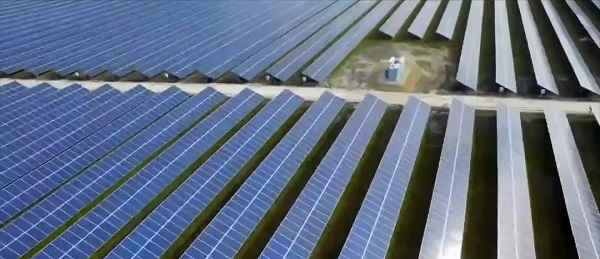
 Energy1 day ago
Energy1 day agoSolar, Wind Might Not Be Totally Dead Under Trump
-
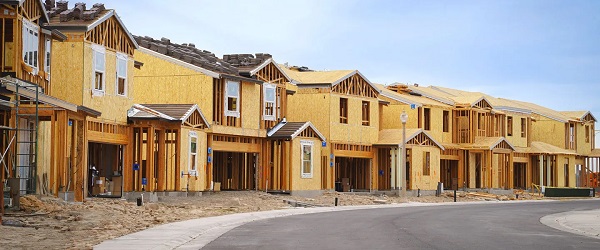
 Business23 hours ago
Business23 hours agoCarney’s housing plan will likely spend a lot for very little






